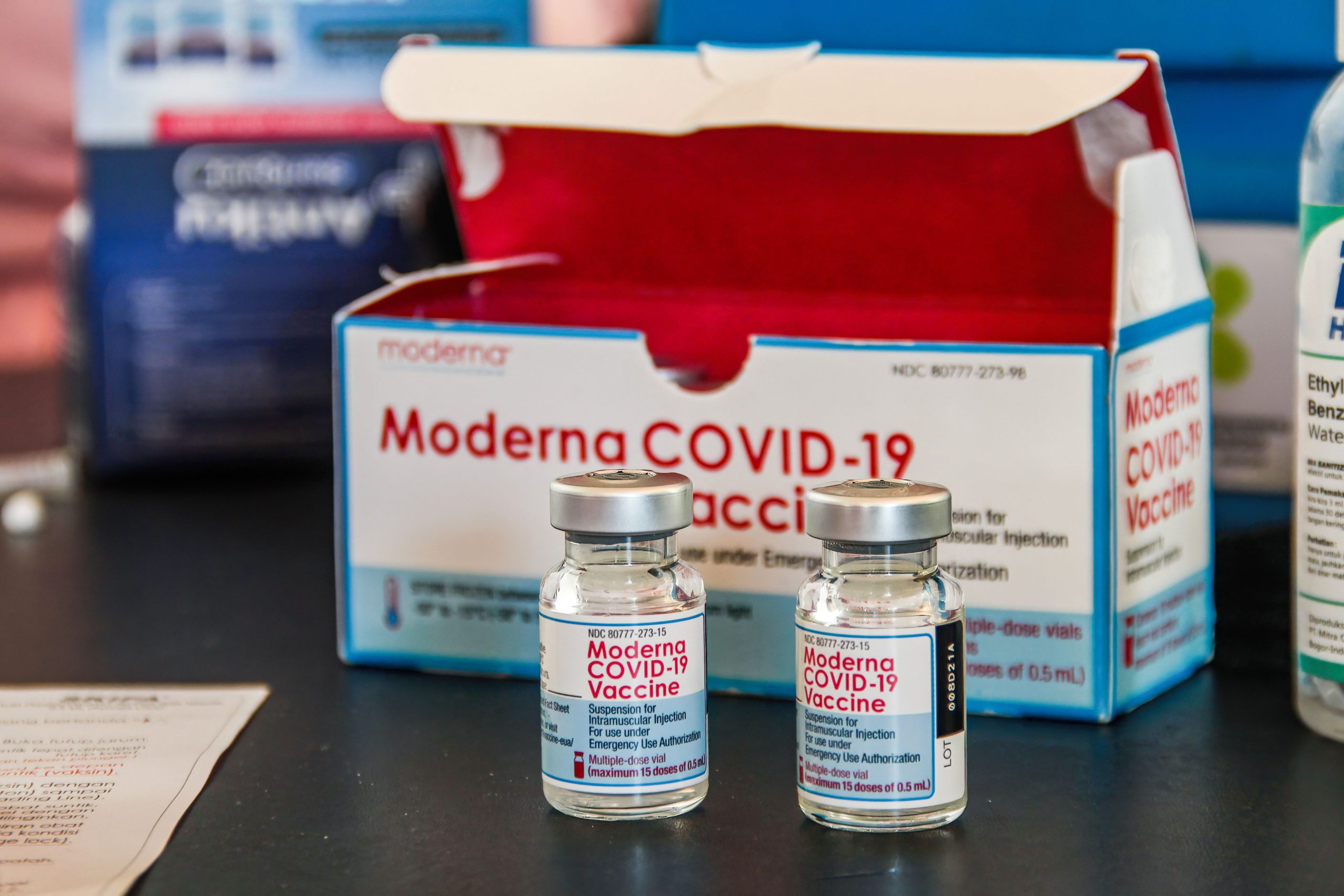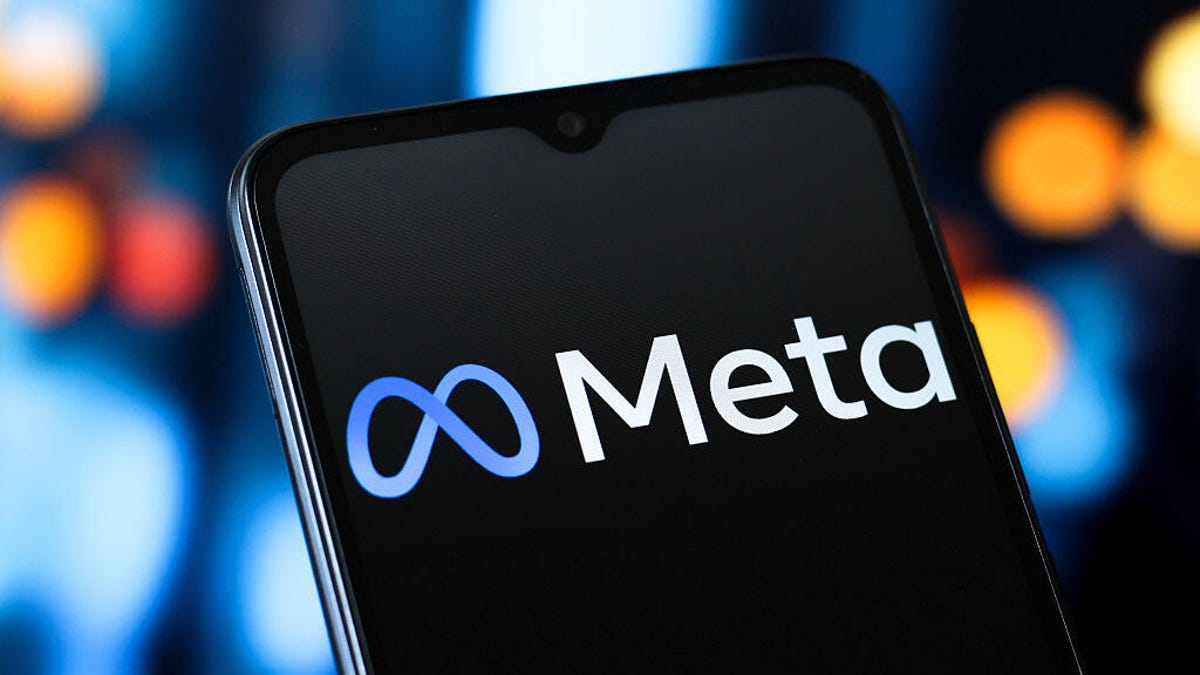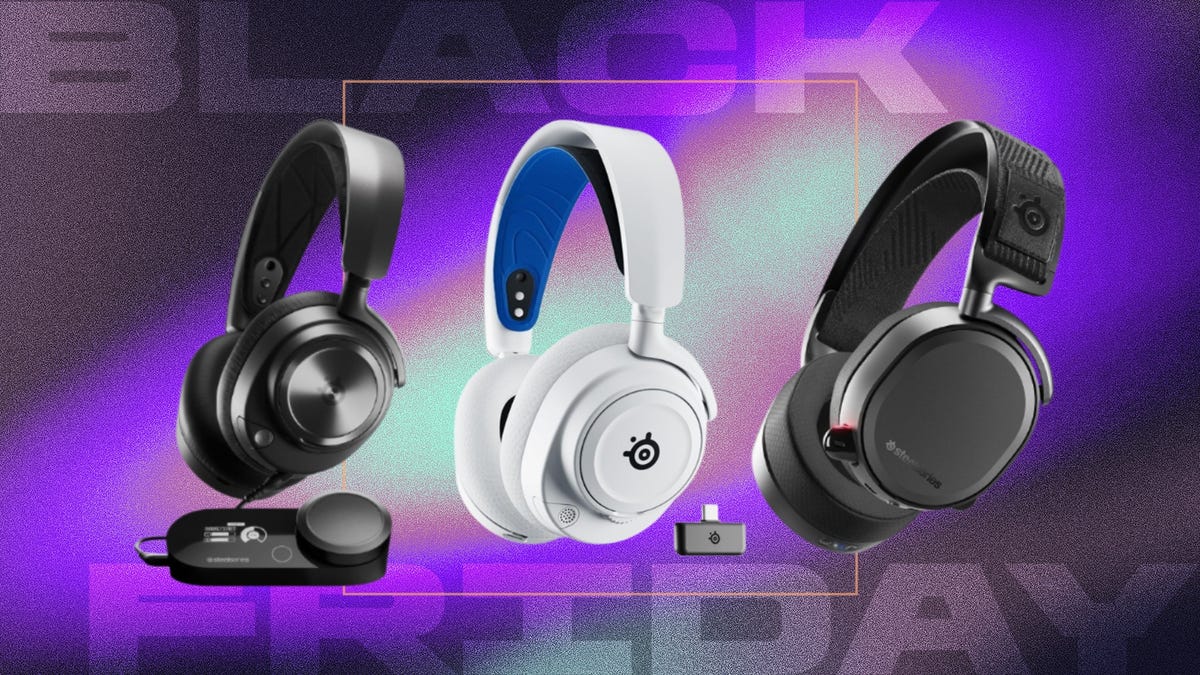Technologies
Moderna booster shot and omicron: CDC guidance, effectiveness, side effects and more
Scientists and health officials strongly urge booster shots for Moderna and Pfizer as the omicron variant of the virus that causes COVID-19 begins to circulate in the US.

Nearly 7 million booster shots — from Moderna, Pfizer and Johnson & Jonhson — were given last week in the US, a record high so far. The reason? In part, according to White House Coronavirus Response Coordinator Jeff Zients, is that people want to protect themselves against the omicron variant. «The best thing you can do if you’re concerned about omicron is to get boosted,» he said during a White House briefing on Tuesday.
Much is still unknown about the omicron variant, including how easily it can pass between people, how serious an infection it can cause and if it can evade immunity. But with more than 100 million people in the US eligible to receive a Moderna, Pfizer or Johnson & Johnson COVID-19 booster shot, the US is doubling down on COVID vaccine efforts, including administering booster shots. (President Joe Biden’s campaign also includes «free» at-home COVID-19 test kits and stricter travel rules for international travelers.)
Health professionals believe that booster shots from Moderna and Pfizercould help slow COVID’s spread, reducing hospitalization and deaths, asthe effects of the vaccine weaken over time. The CDC urges booster shots for anyone over 18, six months after theirsecond dose of Moderna or Pfizer, or two months after getting asingle Johnson & Johnson dose.
The COVID-19 vaccines have proven to be highly effective in preventing hospitalization. People who are unvaccinated are 10 times more likely to be hospitalized if infected. With the federal vaccine mandate halted by a court order, Biden is turning to other measures to get booster shots administered. The government has also ordered 13 million courses of antiviral drugs in anticipation of higher case loads this winter.
Here’s what you need to know about the Moderna booster, including doses, side effects and how to get a free ride. For more details, here’s the latest on COVID-19 vaccines for kids, how you can get a free COVID-19 test kit soon and what to know about breakthrough infections.
Does a COVID vaccine booster protect against the omicron variant?
While it could be two or three weeks until we know more about how easilyomicron can pass from person to person, and how resistant the COVID variant is against the current crop of vaccines, early data suggests the first series of shots and boosters may help guard against serious illness.In a White House briefing on Tuesday, Dr. Rochelle Walensky, director of the Centers for Disease Control and Prevention, said vaccines work and she anticipates they «willat least in part provide some protection against omicron.»
In the same briefing, Dr. Anthony Fauci said scientists are right now examining whether vaccine-induced antibodies lose some of their effectiveness with the omicron variant. Fauci, who is the chief medical advisor to the president, said they could know more as soon as the end of next week.
When is it time to get a COVID booster shot?
If you got Moderna or Pfizer, six months after the date of your second shot listed on yourvaccination card is when you’re eligible to receive your booster dose.The CDC and other health authorities are now urging you to get yourbooster as soon as you’re eligible, to keep your immune response againstomicron, delta and other coronavirus variants as strong as possible.Two months after the Johnson & Johnson vaccine is the time for abooster (more below).
On Dec. 2, Biden also outlined a plan forMedicare to contact the 64 million people it serves and for AARP toreach out to its 38 million senior members. Pharmacies like Walgreens,CVS, RiteAid and others will also contact people who got a vaccine attheir retail stores when it’s time to schedule another dose.
Should people who are pregnant get a booster shot?
The COVID booster recommendations apply to all people 18 years and older, including people who are pregnant. In fact, the CDC urges pregnant people to get a COVID vaccine — and a booster is half a full vaccine dose.
«People who are pregnant or recently pregnant are more likely to get severely ill with COVID-19 compared with people who are not pregnant,» the CDC says on its website.
A recent study also linked COVID-19 infection in pregnant people to higher risk of stillbirth. However, there is no evidence that getting vaccinated decreases fertility in women or men.
Is the Moderna booster shot a third dose?
Booster shots of COVID-19 vaccines are currently half doses of the same vaccine used in the first two full shots. The goal is to top up the vaccine formula that reinforces the body’s immune response against the virus and its variants. The Moderna booster authorized by the CDC is a 50-microgram dose, while the first two shots were each 100 micrograms.
Moderna is also working on a combination shot that contains this year’s flu vaccine and its COVID-19 booster vaccine, but that’s not available right now.
Is Moderna making an omicron booster shot?
Scientists worry the omicron variant could spread more quickly than the now-dominant delta variant because of the number of mutations the new strain has compared with delta. Moderna is currently working on an omicron-specific booster vaccine, along with testing a COVID-19 vaccine that could protect against several mutated strains of the coronavirus.
Like every other vaccine-maker around the world, Moderna is testing the effectiveness of its COVID-19 vaccine against omicron, but it may be weeks before lab tests show concrete evidence of how well Moderna protects people from the new variant.
As part of its booster testing, Moderna is also investigating whether a 100-microgram dose of its booster provides better protection against the omicron variant — in other words, a third dose rather than a half dose as the booster is currently formulated now.
If Moderna needs to make a new vaccine modified for the variant, it could be available early in2022.
How do I know which pharmacies have Moderna appointments?
Boosters are available at roughly 80,000 places across the country, including over 40,000 local pharmacies. Some 90% of Americans have a vaccine site within 5 miles of where they live.
A terrific free service in conjunction with the CDC sends you information when you text your ZIP code to this number: 438829. The response will show you COVID-19 vaccine locations in your area, along with the brand they carry for certain age groups, for instance, Moderna 18+. This can save you the trial and error of calling around, or showing up to your appointment to find that your booster of choice isn’t available. The text can also give you a shortcut to make your appointment right from your phone screen.
You can also check Vaccines.gov to see which vaccines are available where, and call 800-232-0233 for vaccine information.
How can I get a free ride to get my booster shot?
Lyft and Uber are offering free rides for some people who need them. An easy way to access those links for more information is through the text feature above You can also go to Lyft.com/vax or call Uber at: 855-921-0033.
Who can get a Moderna booster shot right now?
As of Nov. 19, all US adults — those age 18 and older — are eligible to get a booster shot of the COVID-19 vaccine. They qualify if it’s been at least six months since they’ve received a second dose of either the Moderna or Pfizer vaccine. Those who received the Johnson & Johnson vaccine are eligible for a booster dose after two months. Adults are encouraged to get whatever booster dose is available to them, even if that means mixing and matching vaccine boosters (more below), in other words, getting a different booster shot than their original vaccination.
What are the side effects of Moderna’s booster?
According to the CDC, those who got the Moderna booster dose reported fewer reactions than they did after the second dose of the vaccine. In its study, the CDC found 95% of those who got Moderna for the first round of vaccine shots chose Moderna for the booster dose.
Is it safe to mix and match vaccine and booster brands? Yes
The US Food and Drug Administration has authorized mixing COVID-19 boosters, which in the US means Moderna, Pfizer and Johnson & Johnson. Anyone eligible for a booster can get any of the available brands of coronavirus vaccines. If you initially received Johnson & Johnson and it’s been two months or longer since you received the initial dose, you’ll be able to get the Moderna or Pfizer booster. If you received Moderna or Pfizer for your first two shots, you could pick any authorized vaccine available to you — including J&J — if you qualify and it’s been six months or longer since your second shot.
Is the Moderna COVID-19 booster shot still free?
All booster shots will be free, regardless of immigration or health insurance status. However, depending on where you get your booster shot — for example, at a local pharmacy — you may be asked to log your insurance status. You may be asked to provide your insurance card information, including your name, date of birth and membership number. You will not be charged for your COVID-19 vaccine or booster shot.
Will I need another COVID booster shot?
The CDC updated its guidance to say that in 2022, some immunocompromised people will be able to get a fourth COVID-19 booster shot. It’s unclear if other groups will need to get a fourth dose at this time, but guidance could change in light of the omicron variant.
For more on coronavirus treatments and vaccines, here’s what we know about monoclonal antibody treatments, the new federal vaccine mandates and why some people may not want the shot.
What does the Moderna booster shot do?
A COVID-19 booster shot — whether from Moderna, Pfizer or Johnson & Johnson — tops off your immune response and guards against a breakthrough COVID-19 infection as the vaccine’s effectiveness decreases over time.
Recent studies of the Pfizer and AstraZeneca vaccines show that their effectiveness can begin to wane after six months. Moderna said early data suggests that those who received the Moderna vaccine in 2020 are showing a higher rate of breakthrough COVID-19 infections than those vaccinated this year, suggesting the need for a booster to maintain high levels of protection.
The information contained in this article is for educational and informational purposes only and is not intended as health or medical advice. Always consult a physician or other qualified health provider regarding any questions you may have about a medical condition or health objectives.
Technologies
Meta Allegedly Profited by $16B From Scam Ads. US Senators Demand FTC, SEC Probe
The lawmakers say Meta’s platforms may be implicated in «about a third of all US scams» and linked to more than $50 billion in consumer losses last year.

US Senators Josh Hawley and Richard Blumenthal are calling for an investigation into Meta over its alleged role in profiting from scam-laden advertisements on Facebook and Instagram. The demand follows a Reuters investigation reportedly based on internal Meta documents that estimated that nearly 10% of Meta’s 2024 revenue — about $16 billion — came from alleged «illicit advertising.»
In a letter to the Federal Trade Commission and the Securities and Exchange Commission, the lawmakers urged regulators to «immediately open investigations and, if the reporting is accurate, pursue vigorous enforcement action … to force Meta to disgorge profits, pay penalties and agree to cease running such advertisements.»
One document reportedly alleged that Meta earned $3.5 billion in just six months from what it classified as «higher-risk» scam ads.
The same internal records reportedly suggested that many ads allegedly violating fraud rules were permitted to run because they «did not apply to many ads… [that staff] believed ‘violated the spirit’ of its rules against scam advertising.»
Meta denies all of these allegations.
Read also: Meta’s All In on AI Creating the Ads You See on Instagram, Facebook and WhatsApp
Don’t miss any of our unbiased tech content and lab-based reviews. Add CNET as a preferred Google source.
Why this matters for you
The scale of this alleged fraud raises serious concerns about Meta’s business model. Many question whether the company is doing enough to police its ad ecosystem, given that a major revenue stream appears to be tied to deceptive or outright fraudulent campaigns.
The senators allege that Meta’s lax enforcement — combined with the continued presence of gambling ads, payment scams, political deepfakes and other dangerous content in its public Ad Library — underscores significant risks.
In their letter, Hawley and Blumenthal highlighted that reducing reports of scam ads by 58% over 18 months — as Meta says — may not tell the whole story. They pointed to broader trends that, according to their own reading of the documents, Meta’s platforms may be allegedly implicated in «about a third of all US scams» and linked to more than $50 billion in consumer losses last year.
Read more: What Is Meta AI? Everything to Know About These AI Tools
What Meta is saying
Meta responded defensively to this call for investigation.
Meta spokesman Andy Stone criticized the senators’ allegations as «exaggerated and wrong,» insisting that the company «aggressively fights fraud and scams because people on our platforms don’t want this content, legitimate advertisers don’t want it, and we don’t want it either.»
Ongoing misinformation on Meta platforms
Among the more provocative allegations is that some of the scam ads impersonate government figures or political leaders. The senators point to specific examples, including a bogus advertisement that falsely claimed President Donald Trump was offering $1,000 to food assistance recipients.
They also raise concerns that foreign cybercrime groups based in countries such as China, Sri Lanka, Vietnam and the Philippines could be behind many of the scam campaigns.
In general, the senators’ push for FTC and SEC action seeks accountability for a social media giant whose ad system may be fueling fraud at an unprecedented scale, though Meta publicly underscores its commitment to user safety. With so much of Meta’s business potentially tied to high-risk ads, the outcome of any investigation could reshape not only its practices but also broader regulatory expectations for major tech companies going forward.
Read more: How to Opt Out of Instagram and Facebook Using Your Posts for AI
Technologies
Today’s NYT Connections Hints, Answers and Help for Nov. 25, #898
Here are some hints and the answers for the NYT Connections puzzle for Nov. 25, #898

Looking for the most recent Connections answers? Click here for today’s Connections hints, as well as our daily answers and hints for The New York Times Mini Crossword, Wordle, Connections: Sports Edition and Strands puzzles.
Today’s Connections: Sports Edition is both fun and tricky. Think colors, and see if you can find items that share the same color. The purple category wants you to look within four words and find a connecting word hidden in them. If you’re struggling with today’s puzzle but still want to solve it, read on for hints and the answers.
The Times now has a Connections Bot, like the one for Wordle. Go there after you play to receive a numeric score and to have the program analyze your answers. Players who are registered with the Times Games section can now nerd out by following their progress, including the number of puzzles completed, win rate, number of times they nabbed a perfect score and their win streak.
Read more: Hints, Tips and Strategies to Help You Win at NYT Connections Every Time
Hints for today’s Connections groups
Here are four hints for the groupings in today’s Connections puzzle, ranked from the easiest yellow group to the tough (and sometimes bizarre) purple group.
Yellow group hint: Not big.
Green group hint: These things are the same color.
Blue group hint: Itchy!
Purple group hint: They all share words that are positive.
Answers for today’s Connections groups
Yellow group: Small-time.
Green group: Things that are pink.
Blue group: Things you can scratch.
Purple group: Starting with optimistic words.
Read more: Wordle Cheat Sheet: Here Are the Most Popular Letters Used in English Words
What are today’s Connections answers?
The yellow words in today’s Connections
The theme is small-time. The four answers are Mickey Mouse, rinky-dink, trivial and two-bit.
The green words in today’s Connections
The theme is things that are pink. The four answers are Barbie Dreamhouse, calamine lotion, cherry blossom and flamingo.
The blue words in today’s Connections
The theme is things you can scratch. The four answers are bug bite, lottery ticket, vinyl record and your head.
The purple words in today’s Connections
The theme is starting with optimistic words. The four answers are glad-hand, Happy Meal, merry-go-round and sunny-side up.
Technologies
I’m Buying These Headphones for My Gamer Thanks to This Deep Black Friday Discount
SteelSeries headphones are among the top gaming headsets on the market and right now you can score them for as much as half off ahead of Black Friday.

Ready or not, Black Friday is just about here. And Black Friday deals are already popping up on the regular.Here at CNET, we offer our services as dedicated deal finders, scouring the market to curate the best offers for you. We recently spotted some of our favorite gaming headsets on sale at Amazon, some of them for more than half off. We don’t know if these prices will last all the way to Black Friday itself, so if you see something you like, we suggest grabbing it sooner rather than later.
Right now, several SteelSeries’ most popular gaming headsets are seeing nice discounts. I’ve highlighted some of the best offers below, including the ones in my own cart right now, but be sure to check out the Amazon page to see all the options.
First up, the headset in my cart right now as as a holiday gift for my discerning teenage son is the SteelSeries Arctis Nova 3x wireless gaming headset, currently down to just $90, a $20 savings. Arctis Nova 3x comes in blue, black or white and is compatible with Xbox, PC, PS5, Switch and mobile and has a whopping 40-hour battery life. They are lightweight and have a stretchy headband for added comfort.
If you want to go pro, check out the SteelSeries Arctis Nova Pro wireless headset, down to $290 from $380. That’s nearly $100 off a multi-platform compatible headset good for Xbox, Switch, PS5, PS4, PC and mobile. This headset was our sibling site, PCMag’s top pick for best overall gaming headphones. It boasts active noise cancellation, 360-degree spatial audio and a ClearCast Gen 2 mic. Only the black variant is currently on sale at this big of a discount.
Essentially a more affordable version of the above, the Arctis Nova Pro wired headset for Xbox is down to $150, which is $100 off the regular price of $250. This one also got PCMag’s seal of approval for best wired gaming headphones.
Buyers should note that a few of the headsets on sale are renewed, so be sure to double check before buying. We’ve also rounded up the best Black Friday headphone deals if you’re in the market for something for an audiophile near you.
CHEAP GAMING LAPTOP DEALS OF THE WEEK
-
$900 (save $300)
Why this deal matters
Gaming headphones come in a wide range of styles and price points, but the best ones factor in three key components: sound quality, battery life and comfort — those all-night gaming sessions pretty much demand it. Over the years, we’ve tested a ton of brands, and SteelSeries frequently comes out on top, especially for PC and Xbox users. Being able to pick up a pair at a discount makes it a great opportunity to gift or grab a new headset that delivers on comfort, sound and quality.
Join Our Daily Deals Text Group!
Get hand-picked deals from CNET shopping experts straight to your phone.
By signing up, you confirm you are 16+ and agree to receive recurring marketing messages at the phone number provided. Consent is not a condition of purchase. Reply STOP to unsubscribe. Msg & data rates may apply. View our Privacy Policy and Terms of Use.
-

 Technologies3 года ago
Technologies3 года agoTech Companies Need to Be Held Accountable for Security, Experts Say
-

 Technologies3 года ago
Technologies3 года agoBest Handheld Game Console in 2023
-

 Technologies3 года ago
Technologies3 года agoTighten Up Your VR Game With the Best Head Straps for Quest 2
-

 Technologies4 года ago
Technologies4 года agoBlack Friday 2021: The best deals on TVs, headphones, kitchenware, and more
-

 Technologies4 года ago
Technologies4 года agoVerum, Wickr and Threema: next generation secured messengers
-

 Technologies4 года ago
Technologies4 года agoGoogle to require vaccinations as Silicon Valley rethinks return-to-office policies
-

 Technologies4 года ago
Technologies4 года agoOlivia Harlan Dekker for Verum Messenger
-

 Technologies4 года ago
Technologies4 года agoiPhone 13 event: How to watch Apple’s big announcement tomorrow
